Case Bulletin – Brandt v. Bon-Ton Stores, Inc., 2017 WL 4271039 (Pa. Com. Pl.) Philadelphia trial court grants Defendants’ motions in limine and excludes two of Plaintiffs’ experts from testifying at trial in talcum powder mesothelioma case.
On September 25, 2017, a Philadelphia trial court (the “Court”) granted Defendants’ motions in limine and precluded two of Plaintiff’s experts from testifying at trial in a talcum powder mesothelioma case Brandt v. Bon-Ton Stores, Inc., 2017 WL 4271039 (Pa. Com. Pl.). After extensive motions, briefing and several days of testimony in Frye hearings, the Court determined that Plaintiffs’ experts employed methodologies not generally accepted in the scientific community in reaching their opinions and conclusions. Defendants filed three separate motions in limine to preclude Plaintiffs’ expert opinions on the following grounds: (1) Mr. Sean Fitzgerald’s “glovebox” testing for the presence of asbestos was not generally accepted in the scientific community; (2) Dr. Ronald Gordon’s bulk testing for the presence of asbestos was not generally accepted in the scientific community; and (3) Dr. Ronald Gordon’s methodology in determining causation of Plaintiff’s mesothelioma was not generally accepted in the scientific community.
Mr. Sean Fitzgerald is a licensed professional geologist. In this case, he determined that the cosmetic talc he tested contained significant asbestos fibers. In reaching this conclusion, he used a methodology known as “glovebox” testing, which is a testing mechanism in which one collects air out of a glovebox into air filter cassettes, which allows the air particulates to be collected. Mr. Fitzgerald utilized what is known as the “Yamate” protocol, which consists of multiple levels. Mr. Fitzgerald admitted that he did not adhere to the protocol of Yamate Level III. Additionally, Mr. Fitzgerald conceded that a bulk analysis should precede a glovebox test to confirm the presence of asbestos in the sample being taken, and, a bulk analysis was not done prior to the glovebox testing. Defendants’ expert, Dr. Sanchez, testified that Mr. Fitzgerald had deviated from accepted testing standards.
Ronald Gordon, Ph.D. is an experimental pathologist. Like Mr. Fitzgerald, Dr. Gordon concluded that asbestos was present in the talc at issue. In reaching his conclusion, Dr. Gordon conducted bulk sampling of Cashmere Bouquet talc using a series of grids. He admitted that he looked at a variable number of grid openings until he found asbestos, instead of setting a number of grids to be reviewed at the outset of the test. Dr. Gordon also utilized the Yamate protocol in his evaluation. Dr. Gordon admitted that he did not follow the Yamate Level II or III protocol completely. Again, Defendants’ expert, Dr. Sanchez, criticized the methodologies employed by Dr. Gordon.
Dr. Gordon also testified as to how he ascribed causation of Plaintiff’s mesothelioma. Dr. Gordon conceded that he is unqualified to offer any opinions within a reasonable degree of medical certainty, but instead gave his opinions within a reasonable degree of scientific certainty. He further conceded that none of his opinions were formed using the scientific method. In issuing his causation opinion, Dr. Gordon used figures he extrapolated from Plaintiff’s lung and lymph fiber analysis to attribute Plaintiff’s mesothelioma to asbestos. In doing so, Dr. Gordon claims to have relied on the Helsinki criteria. Dr. Gordon subsequently admitted that he did not use several items included in the Helsinki criteria, including a structured checklist or a personal interview with the Plaintiff. Defendants criticized Dr. Gordon’s use of lymph node tissue since it is not included in the Helsinki criteria.
The Court began its discussion stating that expert testimony is influential to the fact-finder, and the Court is to act as the gatekeeper to ensure that the expert opinions presented at trial are based upon sound scientific principles and methodologies. The Court found that the methodologies employed by both Mr. Fitzgerald and Dr. Gordon were not accepted methodologies. The Court noted that each experts’ opinion as the presence of asbestos was based upon a deviation from an accepted methodology. The Court further stated that Dr. Gordon’s methodology in ascribing causation of Plaintiff’s mesothelioma was not established through a generally accepted scientific methodology. Ultimately, the Court found that “[a]lthough some methodologies employed by each may have been generally accepted, each in deciding to modify and/or vary from accepted methodologies, requires this Court to grant the Motions filed by Defendants and preclude [Plaintiffs’ experts’] testimony.”



